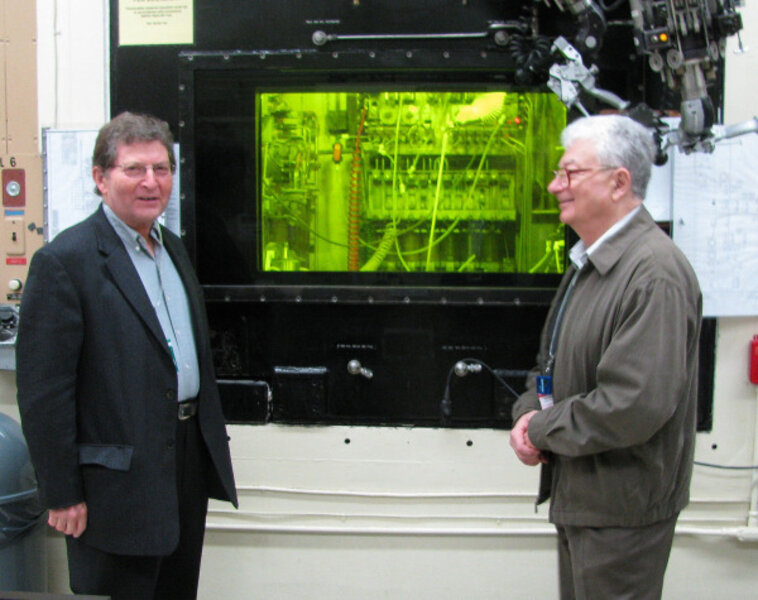Get out the periodic table, kids! There's a new element: 117.
Loading...
What once looked no closer to reality than the fictitious chemical element "unobtainium" has now taken its place on the periodic table of chemical elements.
Let’s hear it for element 117, the last holdout in the last row of the periodic table. An international team of physicists reports that it has produced the element – fleetingly – in an atom smasher in Russia.
The discovery brings to 26 the number of so-called transuranic elements scientists have uncovered – elements that extend the periodic table beyond uranium. Element 117, which has yet to receive a formal name, is the fifth new element scientists have discovered in the past decade.
Taken together, "these elements expand our understanding of the universe and provide important tests of nuclear theories," said Vanderbilt University physicist Joe Hamilton, in a statement. Dr. Hamilton is a member of the team reporting the results.
Although these elements are widely considered "artificial," appearing only in the lab, some researchers say they may occur in nature as extremely rare, fleeting by-products of supernovae – massive stars that blow themselves apart after they’ve exhausted the fuel for their nuclear furnaces.
The discovery of new elements has a millenniums-long history. But by the early part of the 20th century as scientists dug deep into the properties of atoms, new elements increasingly appeared in the lab as researchers bombarded known elements with neutrons or proton-neutron blends known as alpha particles – products of radioactive decay.
'The island of stability'
The quest has increasingly been driven by what nuclear physicists call the island of stability – a range of very heavy elements, not yet created, that theory suggests should remain stable far longer than many of the elements researchers have created in the lab so far.
The notion of an island of stability was first proposed in the 1960s. But "ten years ago, many people thought this field was over," says James Roberto, a physicist at the Oak Ridge National Laboratory in Oak Ridge, Tenn. In effect, he says, scientists thought they had exhausted all the techniques that would yield new elements in enough quantities to be confident of the results.
That changed when researchers got access to a powerful cyclotron at Russia's Joint Institute for Nuclear Research in Dubna for flinging heavy ions at targets. In addition, institute researcher Yuri Oganessian developed a new atomic "projectile" – a heavy ion of calcium – to fling at targets made with other heavy elements.
Calcium ions fired at a radioactive target
In this case, the target was made from berkelium, a radioactive element. It took the Oak Ridge National Laboratory more than a year to process and purify the berkelium used as the cyclotron's target. Researchers at the cyclotron in Dubna then fired beams of calcium ions at the target for 150 days. The haul for all that trouble: six atoms of element 117.
The atoms existed for between 21 and 45 millionths of a second. Being unstable, they made their presence known via the chain of lighter elements appearing as 117 decayed. But the evidence was enough to declare "discovery."
In doing so, the team filled the last gap in the periodic table – a blank square between elements 116 and 118. And the approach yielded hints as to the combination of projectiles and targets needed to create elements 119 and 120.
Dr. Roberto notes that the team now is gearing up to probe element 117's chemical properties. The team's results appear in a research paper accepted for publication in the journal Physical Review Letters.





